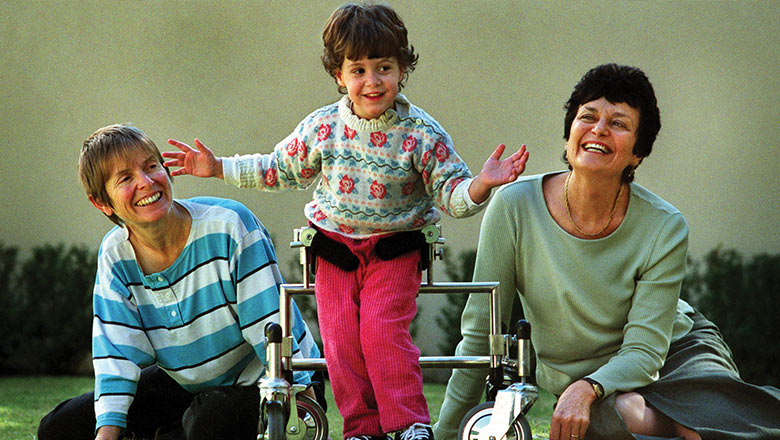Search
Research
Key elements of Goal-Directed Training for children with cerebral palsy: A qualitative content analysisGoal-directed training is an evidence-based occupational therapy intervention for children with cerebral palsy targeting motor performance and goal attainment. There is variability and limited description on goal-directed training delivery within the studies who found it a successful intervention. The aim of this study was to establish the who, what, why and how of goal directed training according to practicing occupational therapists.
Research
Does somatosensory discrimination therapy alter sensorimotor upper limb function differently compared to motor therapy in children and adolescents with unilateral cerebral palsy: study protocol for a randomized controlled trialBesides motor impairments, up to 90% of the children and adolescents with unilateral cerebral palsy (uCP) present with somatosensory impairments in the upper limb. As somatosensory information is of utmost importance for coordinated movements and motor learning, somatosensory impairments can further compromise the effective use of the impaired upper limb in daily life activities.
Research
Cerebral palsy: EpidemiologyCerebral palsy (CP) is a lifelong physical disability, resulting from maldevelopment or damage to the developing brain. All children with CP have a disorder of movement and posture, but this is often accompanied by disorders of intellect, sensation, behaviour and epilepsy. Long-standing CP registers and surveillance systems estimate the prevalence of CP as approximately 2 per 1000 live births; however variations are seen over time and in different regions of the world.
Research
Implementation of an Early Communication Intervention for Young Children with Cerebral Palsy Using Single-Subject Research DesignThe implementation of an intervention protocol aimed at increasing vocal complexity in three pre-linguistic children with cerebral palsy (two males, starting age 15 months, and one female, starting age 16 months) was evaluated utilising a repeated ABA case series design. The study progressed until the children were 36 months of age. Weekly probes with trained and untrained items were administered across each of three intervention blocks.
Research
Application of Inertial Measurement Units and Machine Learning Classification in Cerebral Palsy: Randomized Controlled TrialCerebral palsy (CP) is a physical disability that affects movement and posture. Approximately 17 million people worldwide and 34,000 people in Australia are living with CP. In clinical and kinematic research, goniometers and inclinometers are the most commonly used clinical tools to measure joint angles and positions in children with CP.
Research
Chronic Pain in Young People with Cerebral Palsy: Activity Limitations and Coping StrategiesTo describe the effect of chronic pain on the activities of children and adolescents with cerebral palsy, to describe coping strategies, and to examine associations between effect of pain on activities, coping strategies, and level of pain.
Research
The Use of Serious Gaming to Improve Sensorimotor Function and Motivation in People with Cerebral Palsy: A Systematic ReviewThe aim of this systematic review was to review the evidence for serious gaming interventions in improving sensorimotor function in children and adults with cerebral palsy (CP). Seven databases were searched with terms related to serious gaming and CP.
Research
Eating and drinking abilities and respiratory and oral health in children and young adults with cerebral palsyTo investigate the potential risk factors of respiratory illness (ethnicity, oral health, and eating and drinking ability) in children and young adults with cerebral palsy.

News & Events
Changing the focus of cerebral palsyCerebral palsy is not only the result of birth trauma and the lack of oxygen supply during delivery.
Research
Confident and Trustworthy Model for Fidgety Movement ClassificationGeneral movements (GMs) are part of the spontaneous movement repertoire and are present from early fetal life onwards up to age five months. GMs are connected to infants' neurological development and can be qualitatively assessed via the General Movement Assessment. In particular, between the age of three to five months, typically developing infants produce fidgety movements and their absence provides strong evidence for the presence of cerebral palsy.
